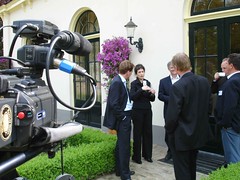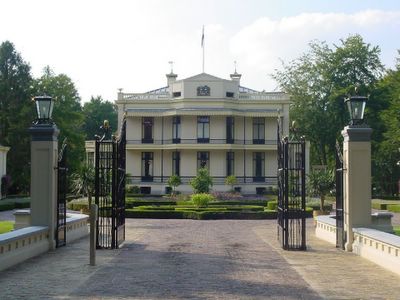The two biggest questions we encounter when talking to businesses on using networks to improve collaboration, innovation and effectiveness are; How to get it of the ground and the business case validation.
Let’s start with getting it off the ground. We only have to look at our own experience. Why did we start a new company on collaborative networking? Why did we start this blog? The answers lie in how we met and what each of us is good at. One of us is good at facilitating and accelerating trends, the other in mediating groups of people, keeping them together under a common purpose. Both of us where triggered by the same wave that is hitting the net and the world linked to it; social software and networking. We both believe this is going to happen, with or without us.
This teaches us that there has to be a seed, that people have to understand the benefits for growth and take an interest. It then becomes essential to facilitate growth and not control it, however good your intentions are, control is deadly to growth in this area. Some things take off and work well for three months and crash (the bandwagon effect dying out), other experiments need time to grow into their potential. There do not seem to be general rules for success.
What seems to be working is creating play grounds for people to start their own initiatives, for them to create common purpose amongst differing backgrounds and possibly cultures. Mediation of these groups is essential in creating identity, an identity that is grounded in the company’s vision, and faces outward based on themes of interest. Trial and error is an important part in this, since people get to the point of understanding what’s in it for them at different times! We need to put in place a timeline and reward structures that address the creation of human, creative, social and financial capital.
This brings us to the second question. The business case is not just about money, it’s just as much about personal development, improving and creating new relationships and gaining and sharing experience and knowledge. The business case should take into account what we are learning and sharing with each other and what that means for our collective effectiveness and added value as a group.
Let us be honest here, in our combined 35 years of business experience, we have yet to see the first business case that actually works out as initially intended. They are an invaluable means to create commitment with all stakeholders to start an initiative; they provide the means to prepare the mind for what is to come and are a benchmark for progress. What they are not is an accurate prediction of the future.
We use a methodology that takes stakeholders through a process of identifying the value of an initiative, its value drivers and the attributes of those value drivers. The latter ones are essential for steering the end result, for this is where people’s motivation derives from. The results are used to check for the necessary capabilities within a company and set up the overall timeline. Once that is done we use various financial models to set up a validated business case. Because all steps are documented, we can easily recalibrate when circumstances change or an assumption is proven wrong. This way of setting up a ‘living’ business case is ideal for networking initiatives and the steering of these complex opportunities.


